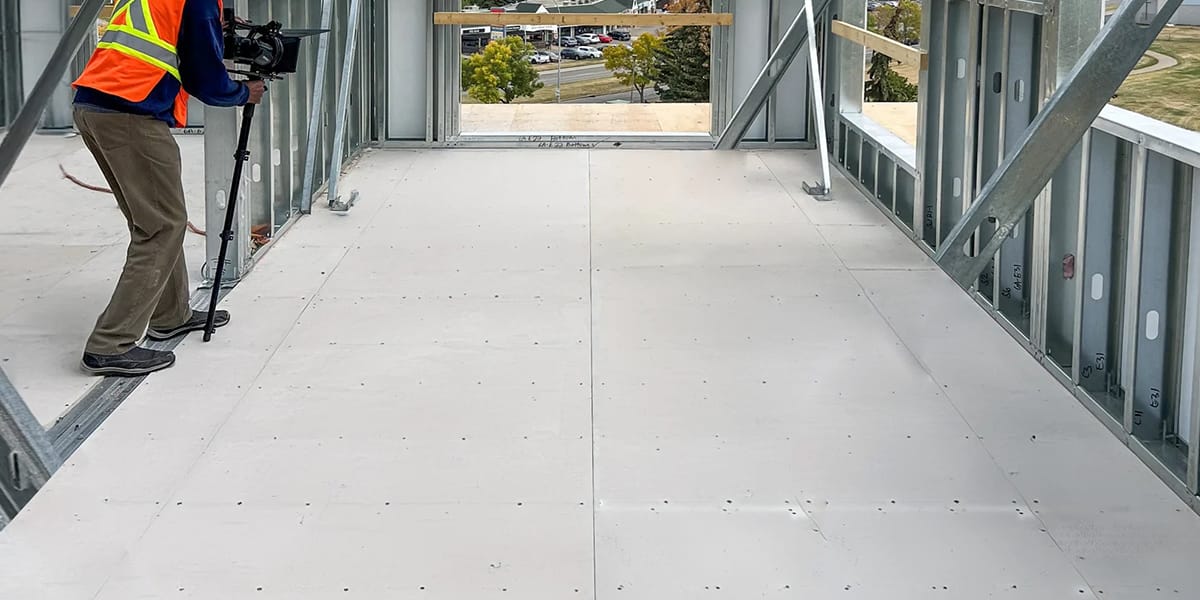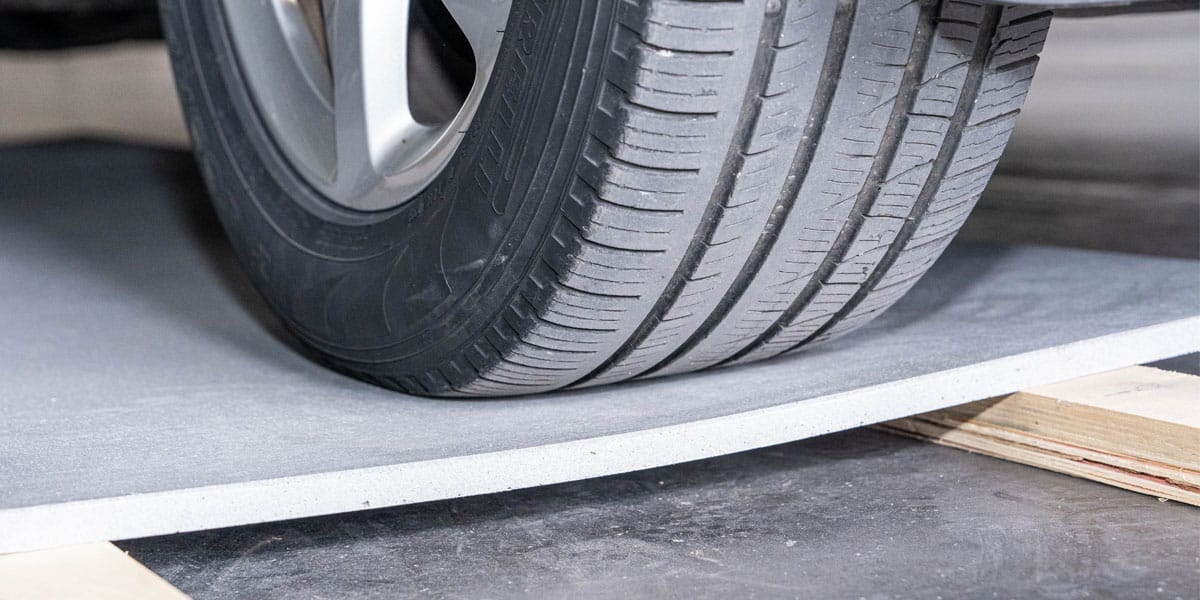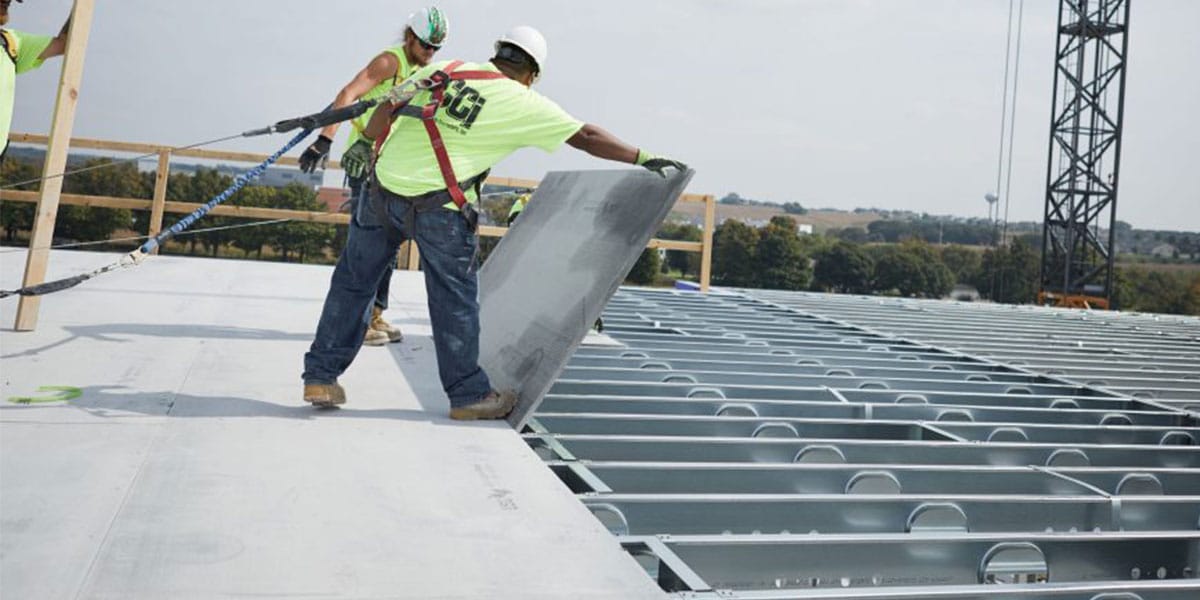
13 Jul 3 Big Benefits of Magnesium Oxide Board Subfloors
Table of Contents
When you look for a subfloor that stands up to real life, magnesium oxide board brings you three big wins: it resists water and mold, won’t catch fire, and stays strong for years. Many builders now choose it over plywood or gypsum because it can handle tough jobs and helps create safer, greener spaces. You can use it in homes or commercial buildings—anywhere you want a solid, lasting foundation.
Thinking about your next project? This guide will help you pick a subfloor that truly performs.
Key Takeaways
Magnesium oxide board stops water and mold. It keeps your floors dry and healthy. This works even in wet places like basements and bathrooms.
This board does not burn easily. It can handle very high heat. This helps keep your home or building safer.
It is strong and lasts a long time. It can take heavy use and hard hits. It does not bend or break for many years.
Magnesium oxide board fits with many floor types. It helps rooms stay comfy by keeping heat in and blocking noise.
It costs more at first, but saves money later. It needs fewer repairs and helps the environment.
1. Moisture & Mold Resistance
Water Protection
If you worry about water damage in your home, you’re not alone. Many subfloors can’t handle moisture, but magnesium oxide board stands out. Here’s why you might want to choose it:
This board has a non-porous surface, so water can’t sneak through and cause hidden problems.
You can use it in places like basements, bathrooms, or kitchens—anywhere that gets damp.
Unlike plywood or OSB, it doesn’t swell, warp, or break down after getting wet.
Even after 25 cycles of getting wet and drying out, magnesium oxide board keeps its strength. OSB loses about 40% of its strength, plywood drops by 9%, and gypsum can lose up to half.
It only absorbs about 0.34% of surface moisture, while gypsum board soaks up nearly 3%. That’s a big difference!
Tip: If you live in a flood-prone or coastal area, this board can save you from costly repairs down the road.
Mold Prevention
Nobody wants mold in their home. It smells bad, looks worse, and can even make you sick. Magnesium oxide board helps you avoid these problems:
Mold needs organic material to grow, but this board is made from inorganic minerals. Mold just can’t feed on it.
It repels moisture, so you don’t get the damp conditions that mold loves.
The board’s thermal insulation helps keep temperatures steady, which means less condensation and fewer chances for mold to start.
Case studies show that buildings with magnesium oxide board stay mold-free, even in humid basements and schools.
You’ll also enjoy better indoor air quality and fewer mold-related health issues.
If you want a subfloor that keeps your space dry and healthy, magnesium oxide board is a smart pick. It may cost a bit more at first, but you’ll save money and headaches over time.
2. Fire Resistance
Noncombustible Properties
If you care about fire safety, you want a subfloor that does not burn. Magnesium oxide board is noncombustible, so it will not catch fire. Even when it gets very hot, it does not burn. In tests, this board stayed strong during fire and water. It did not swell or bend, even after many years.
Here is why it is special:
It can take heat up to 1,472°F (800°C) and still not burn.
It works like a shield, slowing fire and guarding what is below.
It stays strong, so your floor is safe if there is a fire.
Note: Plywood and wood boards can burn fast. They might help fire spread and put your building in danger.
Safety Ratings
You may wonder how magnesium oxide board stacks up to other subfloors. Look at this table for fire ratings:
Material | Fire Rating / Classification | Fire Resistance Characteristics | Comparison Notes |
|---|---|---|---|
Magnesium Oxide (MgO) Board | Class A (Flame Spread Index < 25) | Non-combustible, withstands up to 1,472°F (800°C), does not burn or spread flames | Best fire resistance; keeps strength under heat |
Gypsum Board | Class B or lower (varies) | Slows fire but loses strength in long fires | Less effective than MgO; can crack and weaken |
Plywood | Not fire rated (flammable) | Burns easily, not fire-safe unless specially treated | Poor fire resistance; ignites and spreads fire |
Magnesium oxide board gets a top Class A rating. This means it is one of the safest for fire. Builders use it in big buildings to slow fires and give people time to leave. In real fires, this board acts like a shield. It helps keep the building standing and gives you more time to get out.
3. Strength & Durability
 Impact Resistance
Impact Resistance
You want a subfloor that can take a beating. Life brings heavy furniture, dropped tools, and lots of foot traffic. Magnesium oxide board stands up to all of it. This board has high density, so it does not dent or crack easily. You can drop a hammer or move a couch, and the floor stays strong.
The board’s mechanical strength means it supports heavy loads without bending.
It resists impacts better than many other subfloor materials.
Plywood is strong and resists warping, but it can split or dent if you drop something heavy.
OSB is flexible and light, but it does not handle impacts as well, especially if it gets wet.
If you have kids, pets, or busy rooms, you will notice the difference. Your floor will not show every bump or scratch.
Longevity
You want your subfloor to last for years. Magnesium oxide board keeps its shape and strength, even in tough conditions. It does not warp, swell, or break down over time. This makes it a great choice for places that see a lot of action, like kitchens, hallways, or commercial spaces.
The board keeps its structural support, even after years of use.
It does not degrade when exposed to moisture or fire, so you do not have to worry about hidden damage.
Plywood lasts a long time, but it can warp or split if it gets wet.
OSB can lose strength and swell in damp areas, which means you might need repairs sooner.
You get peace of mind knowing your floor will stay solid and safe for the long haul.
If you want a subfloor that handles daily life and keeps going strong, magnesium oxide board is a smart pick. It gives you both impact resistance and long-term durability, so you can trust your floors for years to come.
Magnesium Oxide Board Options
Types & Formats
When you shop for subfloor panels, you want to know what’s out there. Magnesium oxide board comes in a few main types and sizes, so you can pick what fits your project best. Most builders choose structural panels that are 3/4 inch thick. This thickness gives you the strength you need for floors that last.
Here’s a quick look at what you’ll find:
Attribute | Details |
|---|---|
Type | Structural subfloor panel |
Thickness | 3/4 inch (0.75 inch) – standard for most floors |
Format | Large panels for easy installation |
Certification | UL certified, fire-rated for up to 2 hours |
Performance Features | Mold, water, and impact resistant; sound suppressing |
Structural Compatibility | Works with steel joists, trusses, and many deck systems |
Extra Benefits | Eco-friendly, tested for mold, fungus, and freeze/thaw durability |
Tip: If you want a subfloor that stands up to heavy use, look for panels with UL fire ratings and ASTM durability tests.
You might notice that magnesium oxide board costs more up front than regular gypsum or plywood. But you save money over time because it lasts longer and needs fewer repairs. Many homeowners and builders like that it’s also better for the environment.
Flooring Compatibility
You want your subfloor to work with the flooring you love. Magnesium oxide board makes it easy. You can use it under:
Tile
Laminate
Hardwood
Carpet
Vinyl
Radiant heating systems
This board gives you a flat, stable base for almost any floor. It won’t warp or swell, so your finished floor stays smooth. If you plan to install radiant heat, you’re in luck. Magnesium oxide board handles heat well and helps spread warmth evenly.
Note: Always check with your flooring supplier for the best installation tips. Some floors need special adhesives or underlayments.
With so many options, you can use magnesium oxide board in almost any room or building. It’s a smart choice for both new builds and remodels.
Additional Considerations
 Installation Tips
Installation Tips
Getting the installation right makes a big difference in how your subfloor performs. Here are some best practices you should follow:
Let the boards sit in the room for at least 48 hours before you install them. This helps them adjust to the temperature and humidity.
Always leave small gaps between the boards—1/16 inch for steel framing and 1/8 inch for wood framing. Fill these gaps with non-shrinking, paintable caulk and use backer rods to control the depth.
Keep a 6 mm gap at the edges of the room to prevent buckling.
Stagger the joints for extra strength.
Use corrosion-resistant screws, like stainless steel or ceramic-coated ones, and space them 8 to 12 inches apart.
Start fastening in the center of each board and work outward. This keeps the board flat.
Use self-counterboring screws for a smooth finish, but don’t overtighten.
Cut the boards with heavy-duty saws or carbide-tipped blades for clean edges. Standard utility knives won’t work well.
Wear safety glasses and a dust mask when cutting or sanding.
Make sure the framing is level and square before you start.
Always follow the manufacturer’s instructions for the best results.
Tip: If you’re not sure about the tools or steps, consider hiring a pro. This helps you avoid mistakes like chipping, uneven cuts, or loose boards.
Environmental Impact
You might care about how your building choices affect the planet. Magnesium oxide board stands out for its green credentials:
Many products earn recognition from LEED and BREEAM for energy efficiency and indoor air quality.
These boards have low VOC emissions and do not contain asbestos or formaldehyde.
Some brands use recycled materials, making them even more eco-friendly.
Production creates fewer carbon emissions than traditional boards.
The boards resist fire and mold, which means you replace them less often and create less waste.
Note: Magnesium oxide board is non-toxic, so you can feel good about using it in your home or business.
Acoustic & Thermal Benefits
You want your space to feel comfortable and quiet. Magnesium oxide board helps with both. It has a low thermal conductivity, which means it keeps heat from moving through your floors and walls. Your rooms stay warmer in winter and cooler in summer, so you save on energy bills. The board also helps block sound, making it a good choice for busy homes, offices, or even studios. While exact numbers for soundproofing aren’t always listed, many people use these boards in places where noise control matters.
Keep in mind: Magnesium oxide board can absorb moisture from the air if not sealed properly. Always finish and seal the boards to keep them strong and long-lasting.
You’ve seen how magnesium oxide board gives you three big wins: moisture and mold resistance, fire safety, and long-lasting strength. Many experts agree it stands out because it resists pests and moisture, passes top fire safety tests, and supports green building goals.
You get a subfloor that lasts longer, needs fewer repairs, and keeps your space safer.
Builders often choose it for homes, schools, and even hospitals.
For the best results, talk with a flooring pro or supplier about your project’s needs. You’ll get advice on installation and the right board for your space.
FAQ
What makes magnesium oxide board better than plywood for subfloors?
You get better water, mold, and fire resistance with magnesium oxide board. Plywood can swell or rot if it gets wet. Magnesium oxide board stays strong and safe, even in damp or high-traffic areas.
Can I install magnesium oxide board myself?
Yes, you can install it yourself if you have basic tools and follow the instructions. Always wear safety gear and use the right screws. If you feel unsure, ask a pro for help.
Is magnesium oxide board safe for people with allergies?
Absolutely! Magnesium oxide board does not contain formaldehyde or asbestos. It resists mold and mildew, so you get cleaner air and fewer allergy triggers in your home.
Will my floor feel different with magnesium oxide board?
No, your floor will feel solid and smooth. You can use any flooring on top, like tile, wood, or carpet. The board gives you a flat, stable base for every room.
How do I keep magnesium oxide board in good shape?
Tip: Always seal the edges and surface after installation. This keeps out moisture and helps the board last longer. Clean up spills quickly and check for damage once in a while.

 Impact Resistance
Impact Resistance Installation Tips
Installation Tips